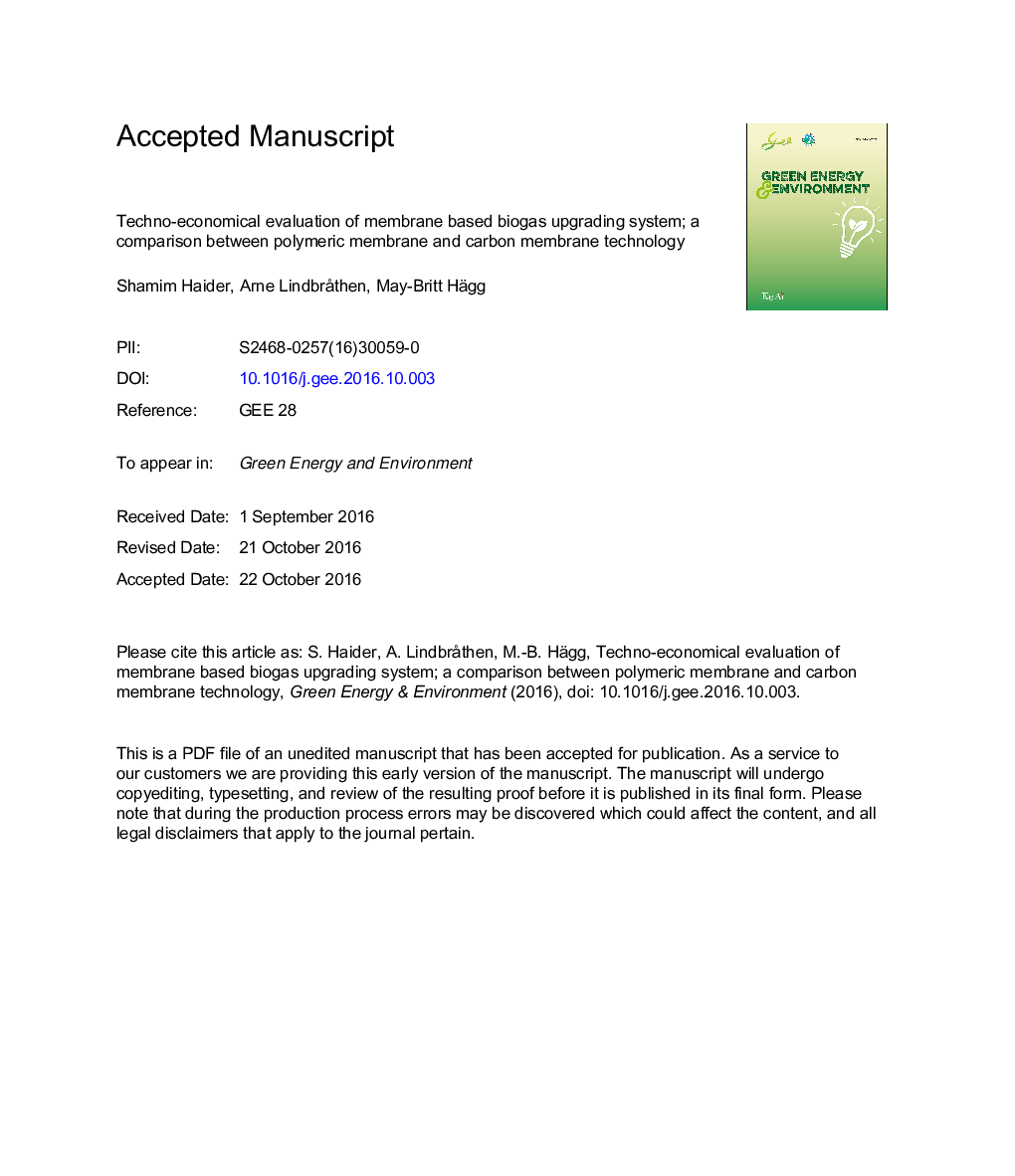| Article ID | Journal | Published Year | Pages | File Type |
|---|---|---|---|---|
| 5478806 | Green Energy & Environment | 2016 | 29 Pages |
Abstract
A shift to renewable energy sources will reduce emissions of greenhouse gases and secure future energy supplies. In this context, utilization of biogas will play a prominent role. Focus of this work is upgrading of biogas to fuel quality by membrane separation using a carbon hollow fibre (CHF) membrane and compare with a commercially available polymeric membrane (polyimide) through economical assessment. CHF membrane modules were prepared for pilot plant testing and performance measured using CO2, O2, N2. The CHF membrane was modified through oxidation, chemical vapour deposition (CVD) and reduction process thus tailoring pores for separation and increased performance. The post oxidized and reduced carbon hollow fibres (PORCHFs) significantly exceeded CHF performance showing higher CO2 permeance (0.021 m3(STP)/m2 h bar) and CO2/CH4 selectivity of 246 (5 bar feed vs 50 mbar permeate pressure). The highest performance recorded through experiments (CHF and PORCHF) was used as simulation basis. A membrane simulation model was used and interfaced to 8.6 V Aspen HYSYS. A 300 Nm3/h mixture of CO2/CH4 containing 30-50% CO2 at feed pressures 6, 8 and 10 bar, was simulated and process designed to recover 99.5% CH4 with 97.5% purity. Net present value (NPV) was calculated for base case and optimal pressure (50 bar for CHF and PORCHF). The results indicated that recycle ratio (recycle/feed) ranged from 0.2 to 10, specific energy from 0.15 to 0.8 (kW/Nm3feed) and specific membrane area from 45 to 4700 (m2/Nm3feed). The high recycle ratio can create problems during start-up, as it would take long to adjust volumetric flow ratio towards 10. The best membrane separation system employs a three-stage system with polyimide at 10 bar, and a two-stage membrane system with PORCHF membranes at 50 bar with recycle. Considering biomethane price of 0.78 $/Nm3 and a lifetime of 15 years, the techno-economic analysis showed that payback time for the best cascade is 1.6 months.
Related Topics
Physical Sciences and Engineering
Energy
Energy Engineering and Power Technology
Authors
Shamim Haider, Arne LindbrÃ¥then, May-Britt Hägg,
